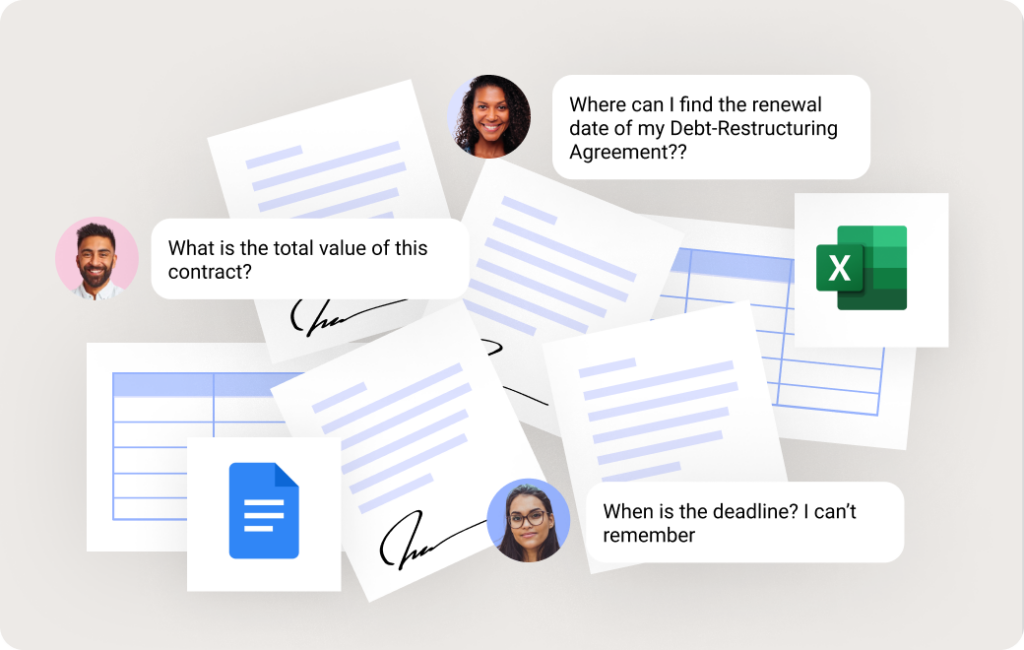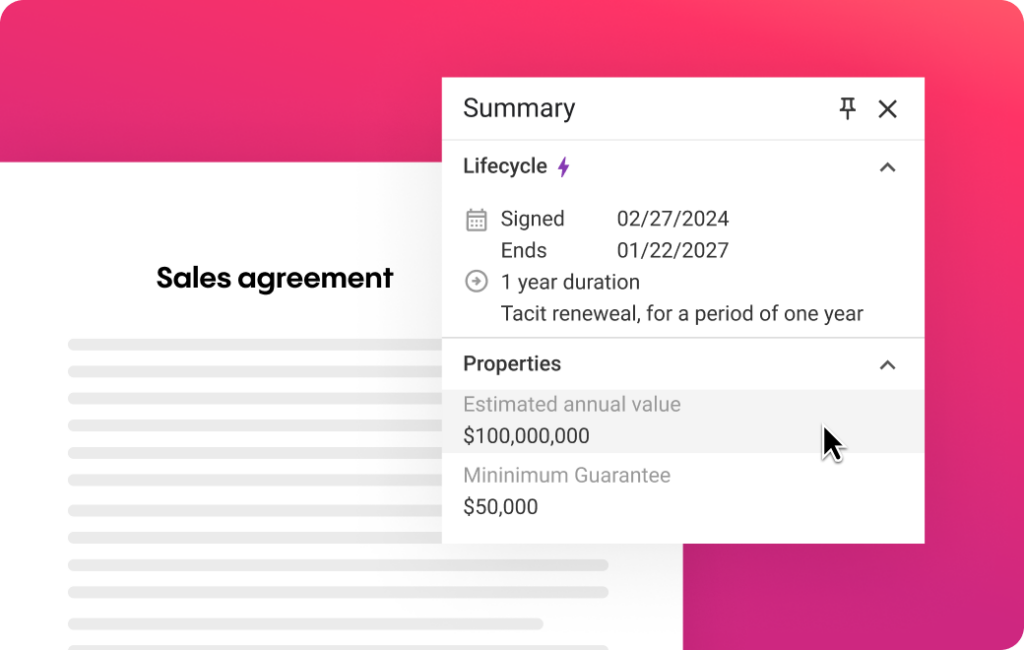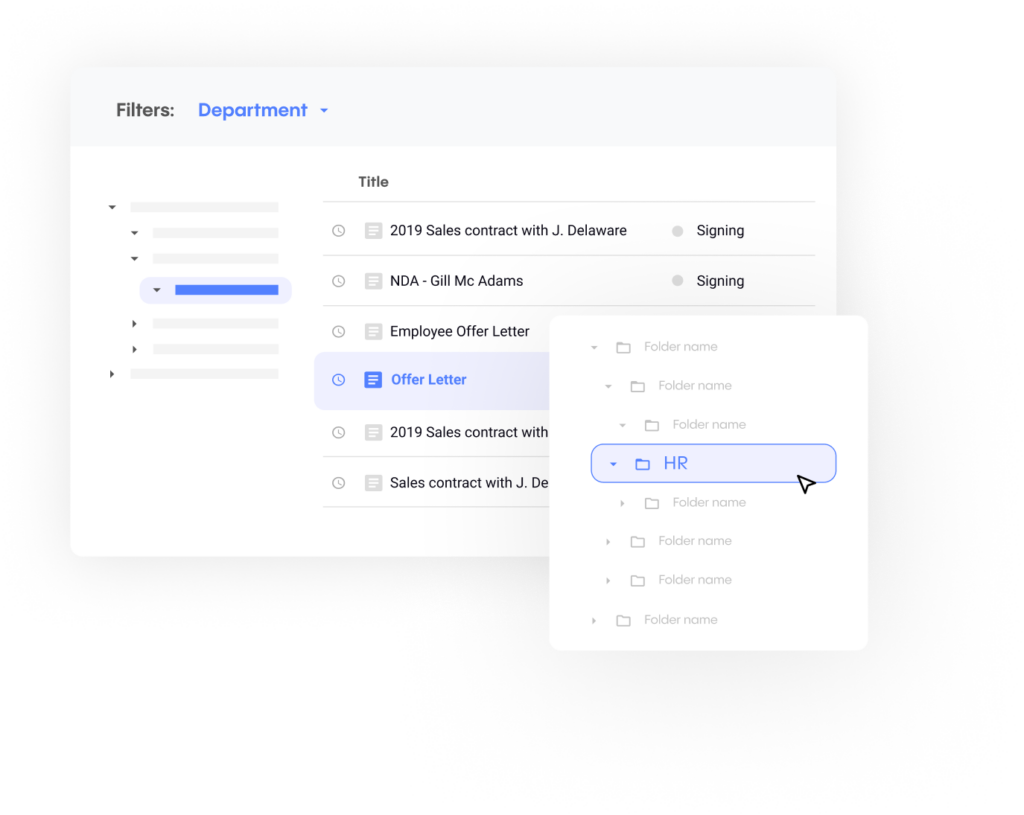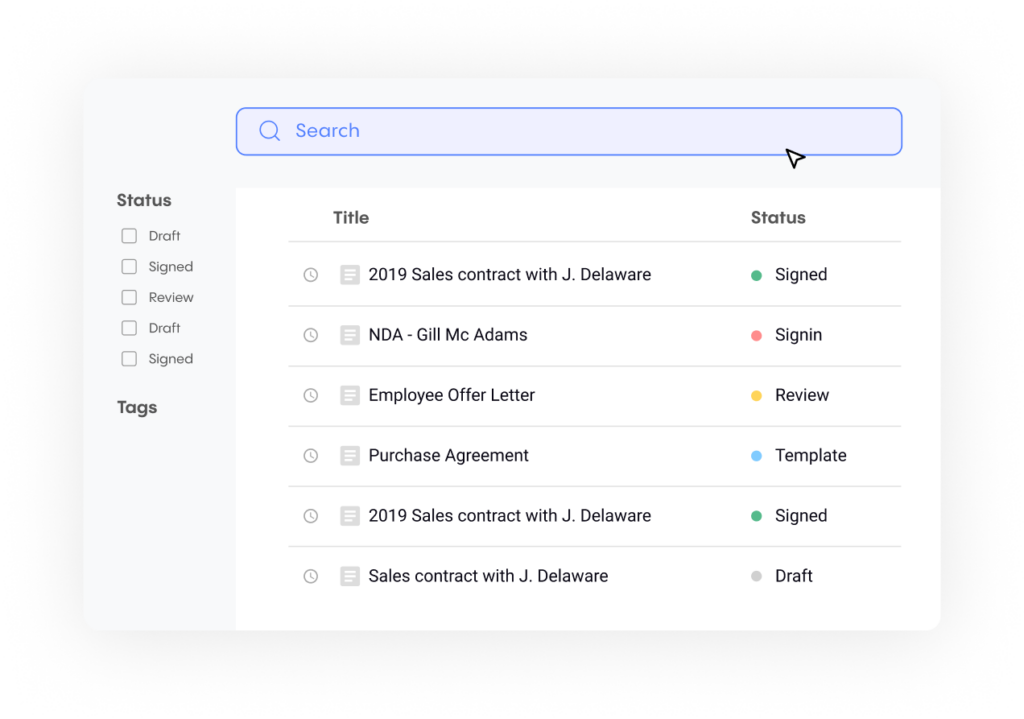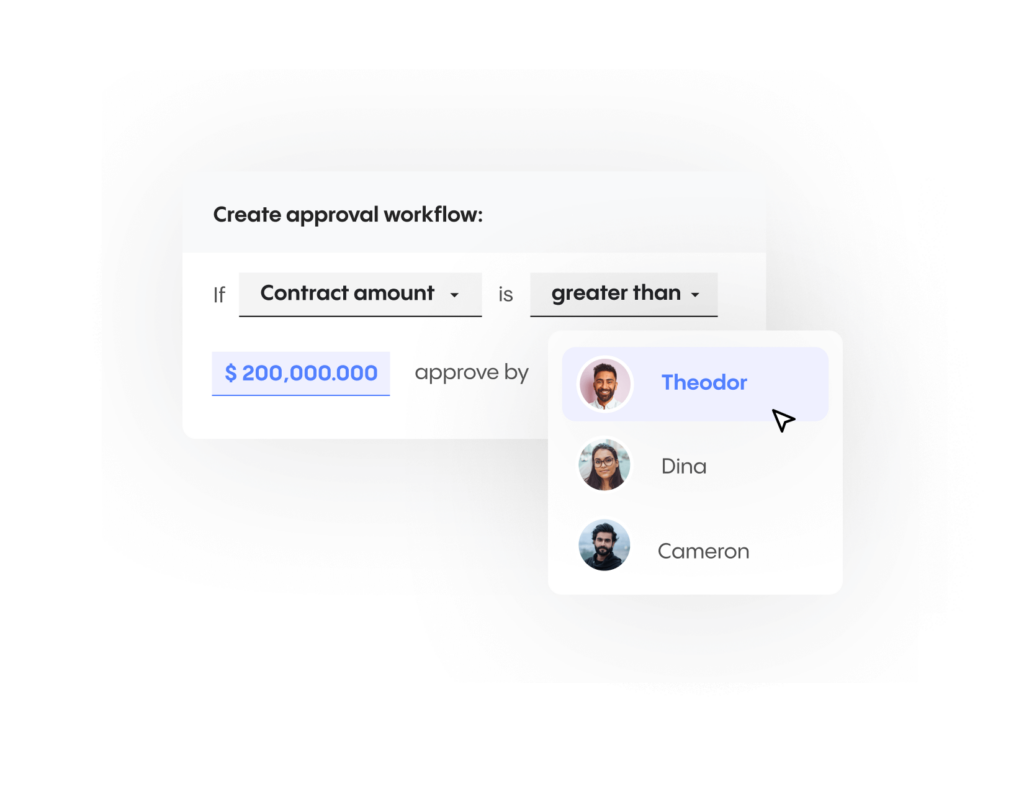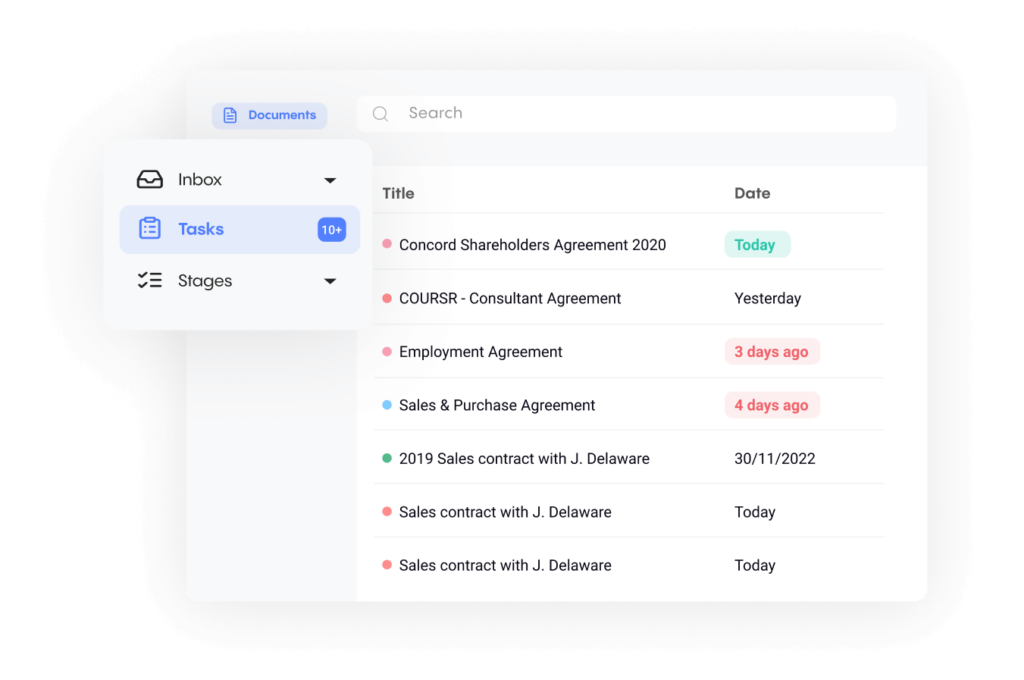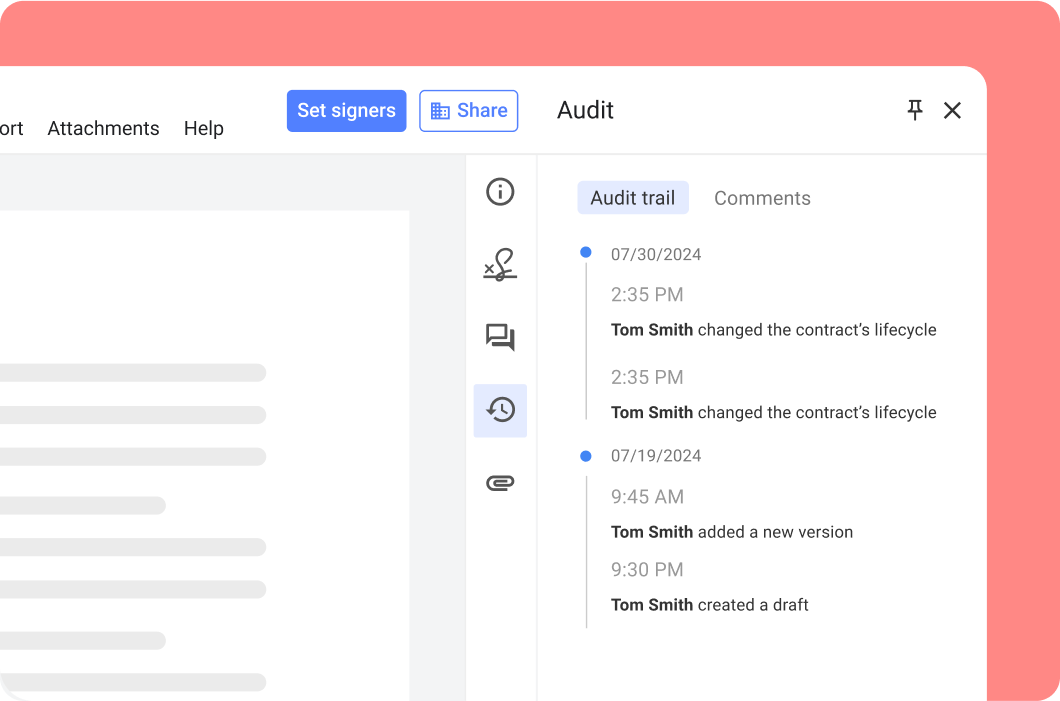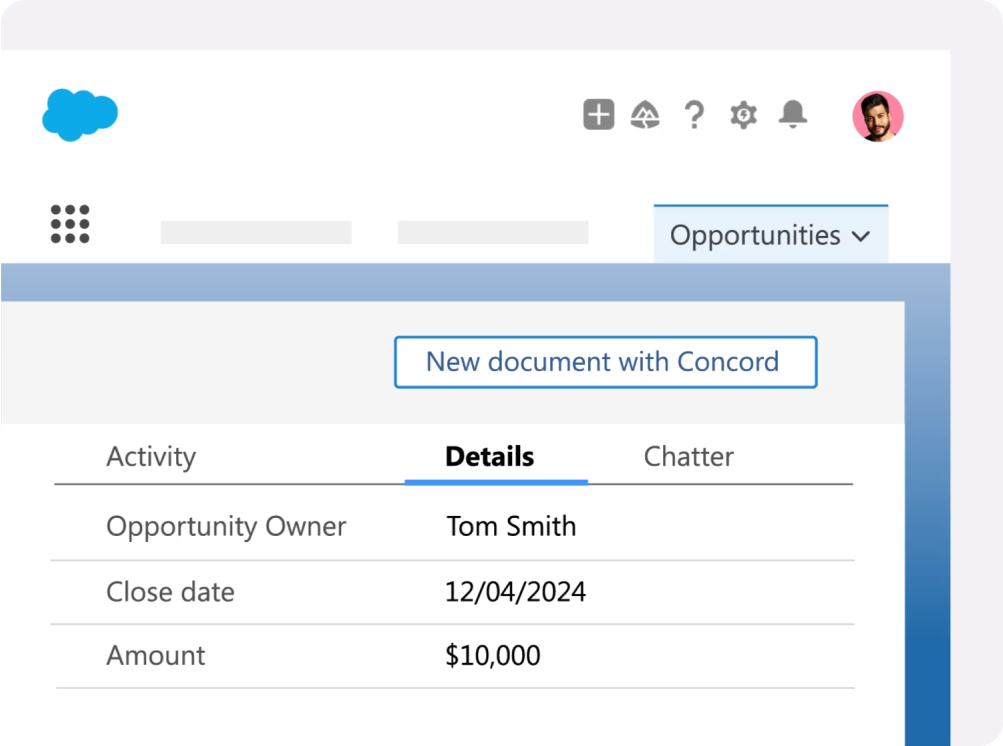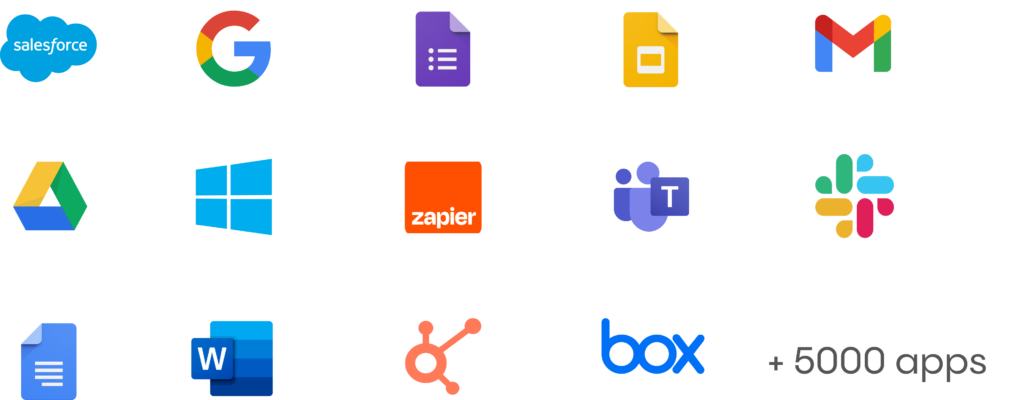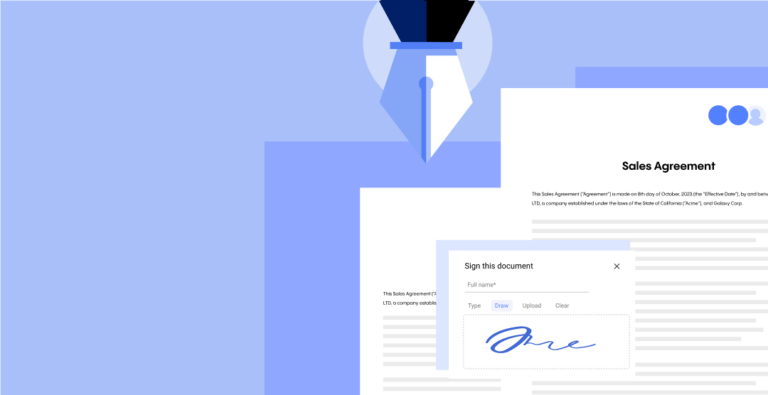Contracts hemorrhage value when left unprotected. World Commerce & Contracting research reveals organizations lose an average of 9.2% of annual revenue through poor contract management—with security breaches representing a growing portion of these losses. The financial impact compounds: PwC’s 2025 Global Digital Trust Insights survey found that 36% of organizations experienced data breaches exceeding $1 million, up from 27% the previous year.
Yet security measures need not impede business velocity. Modern contract management security transforms vulnerability into competitive advantage, enabling organizations to move faster while maintaining ironclad protection. This comprehensive guide delivers actionable security strategies based on real-world implementations and authoritative research.
The evolving contract security threat landscape
Contract management security encompasses the technical and operational measures protecting contractual data throughout its lifecycle. This definition extends beyond simple access restrictions to include encryption protocols, audit trails, compliance frameworks, and incident response procedures. At its core, contract security ensures that sensitive business agreements remain confidential, authentic, and available only to authorized parties.
The threat landscape has transformed dramatically since 2017. Deloitte’s Cybersecurity Threat Trends 2024 report revealed that “abuse of valid credentials accounted for 44.7% of data breaches,” highlighting how attackers now focus on exploiting legitimate access rather than breaking through perimeter defenses. This shift demands a fundamental rethinking of traditional security approaches.
Understanding the true cost of contract security failures
The financial toll extends far beyond immediate breach costs. Consider these compounding factors:
| Impact Category | Average Cost | Hidden Multipliers |
|---|---|---|
| Direct breach costs | $3.3M (PwC 2025) | Legal fees, forensics, notifications |
| Contract value erosion | 9% annually (WorldCC) | Missed renewals, poor negotiations |
| Operational disruption | 42 days average | Lost productivity, delayed deals |
| Regulatory penalties | Up to 4% global revenue | GDPR, CCPA, sector-specific fines |
| Reputational damage | 15% market cap loss | Customer churn, partner distrust |
Shailendra Upadhyay, Senior Research Principal at Gartner, emphasizes the acceleration: “The continuous adoption of cloud, continuous hybrid workforce, rapid emergence and use of generative AI, and the evolving regulatory environment are forcing security and risk management leaders to enhance their security and risk management spending.”
Core security components for modern contract management
1. Advanced encryption standards
Encryption serves as the foundational defense mechanism for contract security. Modern implementations require a multi-layered approach addressing both data states and transmission vectors.
Data at rest encryption: All contract data stored within management systems must utilize AES 256-bit encryption—the same standard protecting classified government information. This ensures that even if storage systems are compromised, contract contents remain indecipherable without proper decryption keys.
Data in transit protection: Contract tracking systems must implement TLS 1.2 or higher protocols for all data transmission. This prevents man-in-the-middle attacks during contract sharing, approval workflows, or system integrations.
Key management considerations: Encryption effectiveness depends entirely on key security. Organizations must implement:
- Hardware security modules (HSMs) for key generation and storage
- Regular key rotation schedules (quarterly minimum)
- Split-key custody for critical encryption keys
- Automated key recovery procedures
2. Granular access control frameworks
Traditional all-or-nothing access models create unnecessary exposure. Modern contract workflow security demands precision control mechanisms.
Role-based access control (RBAC): Define access permissions based on organizational roles rather than individual users. For example:
- Contract managers: Full create, read, update, delete (CRUD) permissions
- Department heads: Read and approve permissions for their team’s contracts
- External auditors: Time-limited read-only access to specific contract categories
- Sales representatives: Create and read permissions for customer contracts only
Attribute-based access control (ABAC): Layer additional controls based on contract attributes:
- Contract value thresholds (e.g., additional approval for contracts over $100,000)
- Geographic restrictions (e.g., EU data protection requirements)
- Temporal limitations (e.g., access expires after project completion)
- Sensitivity classifications (e.g., M&A documents require executive clearance)
3. Comprehensive audit trails
Gartner predicts that by 2025, 50% of cybersecurity leaders will have tried unsuccessfully to use cyber risk quantification to drive enterprise decision making. Detailed audit trails provide the quantifiable data necessary for effective risk assessment.
Every contract interaction must generate immutable log entries capturing:
- User identification (authenticated identity)
- Timestamp (synchronized to atomic clock standards)
- Action performed (view, edit, approve, share)
- Data elements accessed or modified
- System state before and after the action
- IP address and device fingerprint
These logs serve multiple critical functions beyond security monitoring. They enable contract compliance audit processes, support forensic investigations, demonstrate regulatory compliance, and identify process optimization opportunities.
Addressing emerging security challenges
The AI and automation paradox
Artificial intelligence introduces both opportunities and vulnerabilities in contract security. PwC’s 2025 survey found that 67% of security leaders state that GenAI has increased their attack surface over the last year. Organizations must balance automation benefits with new risk vectors.
AI-specific security measures:
- Implement adversarial testing for AI-powered contract analysis tools
- Establish data poisoning detection mechanisms
- Create isolated environments for AI training on sensitive contracts
- Monitor for prompt injection attempts in natural language interfaces
Sales contract automation systems particularly benefit from AI integration, but require additional safeguards to prevent manipulation of automated decision-making processes.
Cloud security considerations
Cloud adoption fundamentally alters the security perimeter. PwC research indicates that 42% of organizations cite cloud-related threats as their top cyber concern, yet many lack comprehensive cloud security strategies.
Cloud-specific security requirements:
- Shared responsibility clarity: Document precisely which security controls fall under your organization’s purview versus the cloud provider’s responsibilities
- Data residency controls: Ensure contract data remains within approved geographic boundaries for regulatory compliance
- Encryption key ownership: Maintain exclusive control over encryption keys, even in managed cloud environments
- API security: Implement rate limiting, authentication, and monitoring for all cloud service APIs
Regulatory compliance and contract security
GDPR and global privacy requirements
The European Union’s General Data Protection Regulation established the global standard for data protection, with fines reaching up to €20 million or 4% of global annual turnover. Contract management systems routinely process personal data, making GDPR compliance non-negotiable.
Key GDPR requirements for contract security:
- Data minimization: Collect and retain only essential personal data within contracts
- Purpose limitation: Use contract data solely for specified, legitimate purposes
- Storage limitation: Implement automated data retention and deletion policies
- Integrity and confidentiality: Maintain appropriate technical and organizational measures
Contract reminder software helps organizations track GDPR-mandated deletion schedules and consent renewals, preventing inadvertent violations.
Sector-specific compliance frameworks
Different industries face unique regulatory requirements that directly impact contract security strategies:
Healthcare (HIPAA): Protected Health Information (PHI) in contracts requires:
- Encryption for all PHI at rest and in transit
- Detailed access logs with six-year retention
- Business Associate Agreements (BAAs) with all vendors
- Annual risk assessments and security reviews
Financial Services (SOX, PCI-DSS): Financial contracts demand:
- Segregation of duties in contract approval workflows
- Quarterly access reviews and certification
- Real-time monitoring of high-value contract modifications
- Encrypted storage with validated cryptographic modules
Government Contractors (NIST SP 800-171): NIST requirements for Controlled Unclassified Information (CUI) include:
- 110 specific security controls across 14 families
- Documented security policies and procedures
- Incident response capabilities within 72 hours
- Annual security awareness training for all personnel
Building a resilient contract security program
Phase 1: Security assessment and gap analysis (Weeks 1-4)
Begin with a comprehensive evaluation of current contract security posture. This assessment must examine technical controls, operational procedures, and organizational readiness.
Technical assessment checklist:
- Inventory all systems storing or processing contracts
- Document current encryption implementations
- Map data flows between systems and stakeholders
- Identify integration points and third-party dependencies
- Evaluate existing authentication mechanisms
Operational assessment areas:
- Review contract lifecycle processes for security gaps
- Analyze user access patterns and permission structures
- Examine incident response procedures
- Assess backup and recovery capabilities
- Evaluate third-party vendor security practices
Phase 2: Risk-based prioritization (Weeks 5-6)
Not all contracts carry equal risk. Develop a risk scoring framework considering:
Contract value factors:
- Total financial commitment
- Strategic importance to business operations
- Intellectual property exposure
- Regulatory compliance implications
- Reputational impact of breach
Threat likelihood indicators:
- External party involvement
- Geographic distribution of stakeholders
- Integration with critical systems
- Historical targeting by threat actors
- Data sensitivity classifications
Apply this framework to prioritize security investments where they provide maximum risk reduction. High-value, high-threat contracts merit additional protections like dedicated encryption keys, enhanced monitoring, and restricted access protocols.
Phase 3: Control implementation (Weeks 7-16)
Deploy security controls in phases to minimize operational disruption while maintaining protection during transition.
Week 7-10: Foundation controls
- Implement contract management security platform
- Deploy encryption for data at rest and in transit
- Establish centralized authentication systems
- Configure basic audit logging
Week 11-14: Advanced protections
- Integrate OCR contract management for legacy document security
- Deploy data loss prevention (DLP) rules
- Implement contract renewal reminder software with security alerts
- Configure automated compliance monitoring
Week 15-16: Optimization and hardening
- Fine-tune access controls based on usage patterns
- Implement advanced threat detection rules
- Establish security metrics and dashboards
- Complete penetration testing and remediation
Phase 4: Continuous improvement (Ongoing)
Security requires constant evolution to address emerging threats and changing business needs.
Monthly activities:
- Review access logs for anomalies
- Update security awareness training content
- Patch and update all contract management systems
- Conduct tabletop exercises for incident response
Quarterly initiatives:
- Perform vulnerability assessments
- Review and update security policies
- Conduct third-party security audits
- Benchmark against industry standards
Annual requirements:
- Complete comprehensive penetration testing
- Update risk assessments and threat models
- Review and renew security certifications
- Strategic security program planning
Technology solutions for contract security
Evaluating contract management platforms
Selecting appropriate technology requires balancing security capabilities with operational requirements. Complex enterprise platforms may offer extensive security features but require 6+ months for implementation. Modern cloud-native solutions can deploy within days while maintaining enterprise-grade protection.
Critical security features to evaluate:
- Encryption capabilities: Verify AES 256-bit encryption for storage and TLS 1.2+ for transmission
- Authentication options: Look for SAML 2.0, OAuth 2.0, and multi-factor authentication support
- Audit trail completeness: Ensure immutable logs capture all security-relevant events
- Compliance certifications: Verify SOC 2 Type II, ISO 27001, and industry-specific certifications
- Data residency controls: Confirm ability to specify geographic data storage locations
SaaS contract management platforms offer particular advantages for security-conscious organizations, providing continuous updates, dedicated security teams, and economies of scale in threat protection.
Integration security considerations
Modern contract management rarely operates in isolation. Secure integration with existing systems requires careful planning and implementation.
API security best practices:
- Implement OAuth 2.0 for all API authentication
- Use rate limiting to prevent abuse
- Encrypt all API traffic with TLS 1.2 minimum
- Monitor API usage for anomalous patterns
- Implement field-level encryption for sensitive data
Common integration scenarios and security requirements:
| Integration Type | Security Considerations | Recommended Approach |
|---|---|---|
| CRM Systems | Customer data protection | Read-only API access with field restrictions |
| ERP Platforms | Financial data security | Encrypted data transfer with audit logging |
| E-signature Tools | Legal validity preservation | Federated authentication with session management |
| Document Repositories | Access control synchronization | SCIM protocol for user provisioning |
| Analytics Platforms | Data anonymization requirements | Aggregate data only with PII removal |
Human factors in contract security
Building security-aware culture
Technology alone cannot ensure contract security. Research from Gartner shows that over 90% of employees who admitted undertaking unsecure actions knew their actions would increase risk, yet proceeded anyway. This highlights the critical importance of human-centric security design.
Effective security awareness strategies:
- Role-specific training: Tailor security education to actual job functions rather than generic awareness
- Scenario-based learning: Use real contract breach examples relevant to your industry
- Positive reinforcement: Reward secure behaviors rather than only punishing violations
- Continuous education: Deliver bite-sized training regularly instead of annual sessions
Reducing security friction
Security measures that impede productivity face inevitable workarounds. Design security controls that enhance rather than hinder business processes.
Friction reduction techniques:
- Single sign-on (SSO): Eliminate password fatigue while improving authentication security
- Context-aware access: Automatically adjust security requirements based on risk factors
- Mobile-optimized workflows: Enable secure contract access from any device
- Intelligent automation: Use agreement approval workflow to streamline secure processes
Incident response and recovery planning
Pre-incident preparation
Effective incident response begins long before any security event occurs. Organizations must establish clear procedures, roles, and communication channels.
Essential incident response components:
- Response team structure: Designate primary and backup personnel for each critical role
- Classification framework: Define severity levels with corresponding response procedures
- Communication protocols: Establish internal and external notification requirements
- Evidence preservation: Document procedures for maintaining chain of custody
- Recovery priorities: Rank contract systems by criticality for restoration sequencing
Incident detection and containment
Early detection dramatically reduces breach impact. Implement multiple detection layers:
Technical detection mechanisms:
- Anomaly detection for unusual access patterns
- File integrity monitoring for unauthorized changes
- Network traffic analysis for data exfiltration
- User behavior analytics for compromised credentials
Procedural detection methods:
- Regular access reviews to identify orphaned accounts
- Periodic contract audits to verify data integrity
- Third-party security assessments
- Whistleblower reporting channels
Upon detection, immediate containment prevents breach expansion:
- Isolate affected systems while maintaining business continuity
- Reset credentials for potentially compromised accounts
- Block suspicious IP addresses and domains
- Preserve evidence for forensic analysis
- Activate backup communication channels
Post-incident improvement
Every security incident provides learning opportunities. Conduct thorough post-mortems focusing on:
Root cause analysis questions:
- What specific vulnerability was exploited?
- Why did existing controls fail to prevent the incident?
- How can detection time be reduced?
- What additional controls would have limited impact?
- Which response procedures need refinement?
Document lessons learned and update security procedures accordingly. Share sanitized findings with industry peers through Information Sharing and Analysis Centers (ISACs) to strengthen collective defense.
Measuring contract security effectiveness
Key performance indicators (KPIs)
Quantifiable metrics enable continuous improvement and demonstrate security program value.
Operational security metrics:
| Metric | Target | Measurement Method |
|---|---|---|
| Mean time to detect (MTTD) | <24 hours | Security event timestamps |
| Mean time to respond (MTTR) | <4 hours | Incident ticket data |
| Patch compliance rate | >95% | Vulnerability scan results |
| Security training completion | 100% | Learning management system |
| Access review frequency | Quarterly | Identity management reports |
Business impact metrics:
- Contract cycle time improvement through secure automation
- Cost avoidance from prevented breaches
- Audit finding reduction year-over-year
- Third-party risk scores improvement
- Customer security questionnaire response time
Security maturity assessment
Regular maturity assessments identify improvement opportunities across people, process, and technology dimensions.
Maturity level indicators:
- Initial (Ad hoc): Reactive security measures, inconsistent practices
- Managed: Documented procedures, basic controls implemented
- Defined: Standardized security processes across the organization
- Quantitatively Managed: Metrics-driven security decisions
- Optimizing: Continuous improvement, predictive security capabilities
Benchmark against industry frameworks like NIST Cybersecurity Framework or ISO 27001 to identify gaps and prioritize investments.
Advanced security strategies
Zero trust architecture for contracts
Traditional perimeter-based security fails in today’s distributed environment. Zero trust principles provide robust protection regardless of user location or device.
Zero trust implementation for contract management:
- Verify explicitly: Authenticate and authorize based on all available data points
- Least privilege access: Grant minimum permissions required for each task
- Assume breach: Design controls assuming attackers have infiltrated the network
- Micro-segmentation: Isolate contract systems from broader network access
- Continuous verification: Re-authenticate based on risk signals during sessions
Legal operations software particularly benefits from zero trust implementation, protecting sensitive legal agreements while enabling collaboration.
Blockchain and distributed ledger technology
Blockchain technology offers unique advantages for contract security through immutability and distributed verification. While not suitable for all use cases, specific scenarios benefit from blockchain integration:
Appropriate blockchain use cases:
- Multi-party agreements requiring trust without central authority
- Smart contracts with automated execution
- Audit trail requirements with tamper-evidence needs
- Cross-border contracts with jurisdiction concerns
Implementation considerations:
- Private versus public blockchain selection
- Performance impact on contract operations
- Integration with existing contract management systems
- Key management for blockchain access
- Regulatory acceptance in your jurisdiction
Quantum-resistant cryptography
Quantum computing threatens current encryption standards. Forward-thinking organizations are beginning migration to quantum-resistant algorithms.
Quantum readiness steps:
- Inventory current cryptographic implementations
- Identify systems requiring long-term confidentiality
- Evaluate post-quantum cryptographic standards
- Plan migration timeline based on threat assessments
- Implement crypto-agility for future algorithm changes
Vendor and supply chain security
Third-party risk management
Contract management systems often integrate with numerous third parties, each representing potential security vulnerabilities. Research indicates that 15% of data breaches trace to third-party vendors, necessitating comprehensive vendor security programs.
Vendor security assessment criteria:
- Security certification verification (SOC 2, ISO 27001)
- Penetration testing reports review
- Incident response capability evaluation
- Data handling and retention policies
- Subcontractor security requirements
- Cyber insurance coverage verification
Most efficient CLM for handling vendor agreements includes built-in vendor risk scoring and continuous monitoring capabilities.
Supply chain security measures
Securing the contract management supply chain requires:
- Software composition analysis: Identify and track all third-party components
- Vulnerability monitoring: Continuous scanning for known vulnerabilities
- Patch management: Rapid deployment of security updates
- Alternative vendor planning: Maintain contingency options for critical services
- Security requirement flow-down: Ensure subcontractors meet security standards
Future-proofing contract security
Emerging threat landscape
Security strategies must evolve to address emerging threats:
Anticipated threat evolution:
- Increased sophistication of social engineering attacks
- AI-powered attack automation and personalization
- Supply chain targeting for maximum impact
- Ransomware specifically targeting contract repositories
- Nation-state actors focusing on commercial espionage
Proactive defense strategies:
- Implement deception technologies to detect advanced threats
- Deploy behavioral analytics for anomaly detection
- Establish threat intelligence sharing partnerships
- Conduct regular red team exercises
- Maintain offline contract backups for ransomware recovery
Technology advancement integration
Emerging technologies offer new security capabilities:
Privacy-enhancing technologies (PETs):
- Homomorphic encryption for processing encrypted contracts
- Secure multi-party computation for joint ventures
- Differential privacy for analytics without exposure
- Federated learning for AI model improvement
Extended detection and response (XDR):
- Unified security monitoring across endpoints, network, and cloud
- Automated threat correlation and response
- Reduced mean time to detect and respond
- Simplified security operations center (SOC) operations
Building business case for contract security investment
Quantifying security ROI
Security investments compete with other business priorities. Build compelling business cases through:
Direct cost avoidance calculations:
- Breach probability reduction × average breach cost
- Compliance penalty avoidance
- Cyber insurance premium reductions
- Operational efficiency gains
Indirect value creation:
- Competitive advantage from security certifications
- Customer trust and retention improvements
- Faster contract cycles through secure automation
- Reduced legal and audit costs
Stakeholder communication strategies
Different stakeholders require tailored security messaging:
Board of Directors: Focus on risk reduction, compliance assurance, and competitive positioning
Executive Leadership: Emphasize operational efficiency and revenue protection
Finance Teams: Highlight cost avoidance and ROI calculations
Legal Department: Address compliance requirements and litigation risk reduction
Operations Teams: Demonstrate productivity improvements and process simplification
Contract management reporting capabilities provide visual dashboards that effectively communicate security program value to diverse audiences.
Implementation roadmap and quick wins
30-day quick wins
Demonstrate immediate value through rapid improvements:
- Week 1: Implement multi-factor authentication for all contract system access
- Week 2: Deploy contract management dashboard examples for security visibility
- Week 3: Establish automated backup procedures with encryption
- Week 4: Complete security awareness training for high-risk roles
90-day milestone targets
Build momentum with substantial improvements:
- Complete security assessment and gap analysis
- Deploy core encryption and access controls
- Implement basic audit logging and monitoring
- Establish incident response procedures
- Begin third-party security reviews
One-year transformation goals
Achieve comprehensive contract security maturity:
- Full zero trust architecture implementation
- Advanced threat detection and response capabilities
- Completed compliance certifications
- Mature security metrics and reporting
- Established security culture throughout organization
Conclusion: Security as competitive advantage
Contract security transcends risk mitigation—it enables business acceleration. Organizations with robust security frameworks execute contracts faster, expand into new markets confidently, and build trust that translates into revenue growth.
The journey from reactive security to proactive protection requires commitment, investment, and cultural change. Yet the alternative—continuing to hemorrhage value through security failures—makes transformation imperative.
Start today. Assess your current security posture. Prioritize based on risk. Implement incrementally but persistently. Transform contract security from business constraint into competitive differentiator.
Frequently Asked Questions About Contract Management Security
What is contract management security and why is it critical?
Contract management security encompasses all technical and operational measures protecting contract data throughout its lifecycle. This includes encryption protocols, access controls, audit trails, compliance frameworks, and incident response procedures. It’s critical because organizations lose an average of 9.2% of annual revenue through poor contract management, with security breaches representing a growing portion of these losses.
Key security components include AES 256-bit encryption, role-based access controls, comprehensive audit logging, and automated compliance monitoring.
What are the most critical security features for contract management?
Essential security features for contract management include:
- Encryption: AES 256-bit for data at rest and TLS 1.2+ for data in transit
- Access Controls: Role-based (RBAC) and attribute-based (ABAC) permissions
- Authentication: Multi-factor authentication with SAML 2.0 and OAuth 2.0 support
- Audit Trails: Immutable logs capturing all contract interactions
- Compliance Tools: Automated monitoring for GDPR, HIPAA, SOX, and other regulations
- Zero Trust Architecture: Continuous verification and least privilege access
How much should organizations invest in contract security?
Organizations typically allocate 15-20% of their total contract management platform costs to security enhancements, with higher percentages for regulated industries. Gartner research shows security spending is projected to grow 14.3% to reach $215 billion in 2024. The investment pays off quickly – preventing even a fraction of the typical 9.2% revenue loss from poor contract management delivers substantial ROI.
Modern cloud platforms starting at $399 per month often provide superior security to on-premise deployments costing significantly more.
What compliance requirements affect contract management security?
Compliance requirements vary by industry and geography:
- Universal: GDPR (EU data), CCPA (California residents)
- Healthcare: HIPAA requirements for PHI in contracts
- Financial: SOX for public companies, PCI-DSS for payment data
- Government: NIST SP 800-171 for controlled unclassified information
- Industry: ISO 27001, SOC 2 Type II certifications
Non-compliance can result in fines up to €20 million or 4% of global annual turnover under GDPR alone.
How quickly can organizations implement contract security improvements?
Basic security improvements can begin immediately with multi-factor authentication deploying within days. Comprehensive platforms can be operational within one business day for standard configurations, contrasting with traditional enterprise systems requiring 6+ months. A phased approach typically includes:
- 30 days: MFA, basic encryption, automated backups
- 90 days: Core controls, audit logging, incident response procedures
- 1 year: Full zero trust architecture, advanced threat detection, security certifications
How to Implement Enterprise-Grade Contract Security with Concord
A step-by-step guide to deploying comprehensive contract management security that protects your agreements while accelerating business operations.
Assess Current Security Posture
Begin with a comprehensive evaluation:
- Inventory all systems currently storing contracts
- Document existing security controls and gaps
- Identify high-risk contracts requiring immediate protection
- Review compliance requirements for your industry
This assessment typically reveals that 44.7% of vulnerabilities stem from credential abuse, highlighting the need for robust access controls.
Deploy Concord’s Security Foundation
Concord provides enterprise-grade security features that can be activated within one business day:
- Encryption: AES 256-bit encryption for all stored contracts
- Authentication: Multi-factor authentication with SSO support
- Access Controls: Granular role-based permissions
- Audit Trails: Comprehensive logging of all contract activities
- Compliance: SOC 2 Type II certified platform with GDPR compliance
Starting at $399/month, Concord delivers security capabilities that typically cost enterprises significantly more with on-premise solutions.
Configure Advanced Security Features
Leverage Concord’s advanced capabilities:
- AI-Powered Monitoring: Detect anomalous access patterns automatically
- Zero Data Retention: Your contract data is never used to train AI models
- Custom Workflows: Implement approval chains based on contract value or risk
- Integration Security: Secure connections with Salesforce, HubSpot, and 5000+ apps via Zapier
These features help prevent the 9.2% average revenue loss from poor contract management.
Establish Monitoring and Response Procedures
Create ongoing security practices:
- Set up automated alerts for suspicious activities
- Configure regular access reviews and permission audits
- Implement incident response procedures
- Schedule quarterly security assessments
Concord’s intuitive dashboards provide real-time visibility into security metrics, enabling rapid response to potential threats.
Measure and Optimize Security Performance
Track key security metrics:
- Mean time to detect (MTTD) security incidents
- Access review completion rates
- Compliance audit results
- Security training participation
Concord’s reporting capabilities help demonstrate ROI through reduced security incidents, faster contract cycles, and improved compliance scores.
Bibliography
- Deloitte. (2024). Deloitte Cybersecurity Threat Trends Report 2024
- European Union. (2024). What is GDPR, the EU’s new data protection law?
- Gartner, Inc. (2023). Gartner Forecasts Global Security and Risk Management Spending to Grow 14% in 2024
- Gartner, Inc. (2023). Gartner Unveils Top Eight Cybersecurity Predictions for 2023-2024
- National Institute of Standards and Technology. (2019). What Is the NIST SP 800-171 and Who Needs to Follow It?
- PwC. (2024). Only 2% of businesses have implemented firm-wide cyber resilience: PwC 2025 Global Digital Trust Insights
- PwC. (2024). A C-Suite Playbook – Bridging the gaps to cyber resilience
- World Commerce & Contracting. (2024). World Commerce & Contracting Report Reveals Critical Decline in Business Contract Effectiveness


